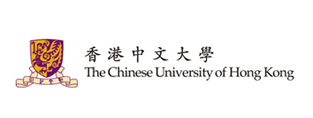
| Home | Mission | Research | Education | Community Service | Events | Annual Report | Healthy Ageing |
Phisiological Effects of Ageing

▪ Ageing Skin To most the elderly, ageing is most manifest on the skin and hair. Public concern over skin wrinkles, changes in skin pigmentation, hair loss, and graying hair is mainly related to self-image. However, gerontologists think that these signs may serve as “biomarkers” for ageing and there is only some correlation between these signs of ageing and well-being. There are some distinct structural and functional changes in the skin occur with normal ageing. They include wrinkling and sagging of skin, loss of resilience, diminished absorption, altered thermal regulation, decreased sensitivity to pain and pressure, decreased inflammatory response, lowered protection from UV light, and delayed healing. Graying of hair is a normal ageing process which normally begins in the fifth decade. Graying appears first at the temples and gradually involves the whole scalp and then the beard and body hair. Furthermore, there is a reduction in the number of hair follicles per inch of skin accompanies ageing and it leads to a slower hair growth and a narrowing of the hair diameter. ▪ Ageing Cardiovascular System 1. Changes in Heart
▪ Changes in bone The bone mass peak reach at 25-30 years old, start to decrease some about age 39 slowly and the loss accelerate after approximately age 50, with menopause in women. These losses are multifactorial and involve age-related changes (reduced Ca absorption, increased bone resorptive activity and decreased osteoblast bone formation), physical inactivity, hormone deficiency, and nutritional insufficiencies. Hence, adequate calcium intake and physical activity is important in the elderly in preventing the osteoporosis. ▪ Ageing Bladder As we age, the connective tissue and muscles involved in expansion and contraction of the bladder weaken. In normal adults, the bladder can store more than 400~500ml urine in female and 350~400ml urine in male. The ability to store urine is reduced in the older person, resulting in more frequent episodes of bladder voiding. The efficiency of emptying the bladder is reduced in older persons, while the perception of the need to void is also reduced. ▪ Ageing Kidney Renal function declines with age. Approximately 50% the nephrons are lost between the ages of 30 & 70 years. Reduction in renal function leads to impaired homeostasis, makling the elderly person much more vulnerable to the effects of dehydration and water overload. Ciradian rhythms of water excretion are lost leading to nocturia. Many drugs are excreted by the kidney. Usual adult doses may lead to drug toxicity. ▪ Ageing Respiratory System With ageing, elasticity of the lungs declines, the chest wall becomes increasingly stiff as a result of kyphosis and calcification of costal cartilages. These structural changes lead to reduced capacity in ventilating of the lungs. This predispose them to chest infection and reduced capacity to perform physical exercise. ▪ Ageing Nervous System The weight of the brain decreases significantly with normal ageing, with ageing, the awareness of pain, touch, temperature, joint position and vibration sense is reduced; control of posture and balance also declines with age, so that older people are more prone to falls. These can due to number of changes in brain function:
▪ Ageing Gastrointestinal System The secretion of saliva decreases with ageing and it leads to dryness of mouth and discomfort in talking and chewing for the older person. Swallowing may be affected by disease processes rather than by old age. There is no major change in function of stomach except difficulty in digesting meats due to weakening of its muscles and change of gastric juice contents.
▪ Ageing Endocrine System Hormones are major contributors to homeostatic regulation in the body. The effects of ageing on the endocrine system are illustrated below by indicating the changes in three major hormones, namely sex hormones, thyroid hormone and insulin.
▪ Changes in muscles From age 30 to age 80, muscle mass decreases in relation to body weight by about 30-40%. Strength also decreases, from age 30 to age 80 a person’s handgrip strength decreases 60%; however, physical activity plays an important mitigating role: people who remain physical activities do not appear to lose any strength. Preservation of muscle mass is important in maintaining function. Resistance exercises is the only effective method in reducing the age related decline in muscle function.
|
TOOLS
WHAT'S NEW |
|||||






